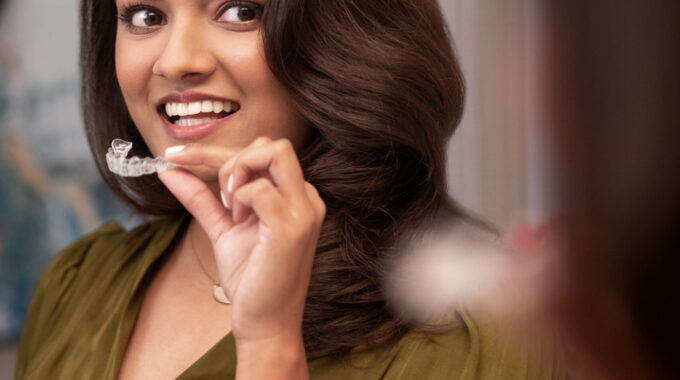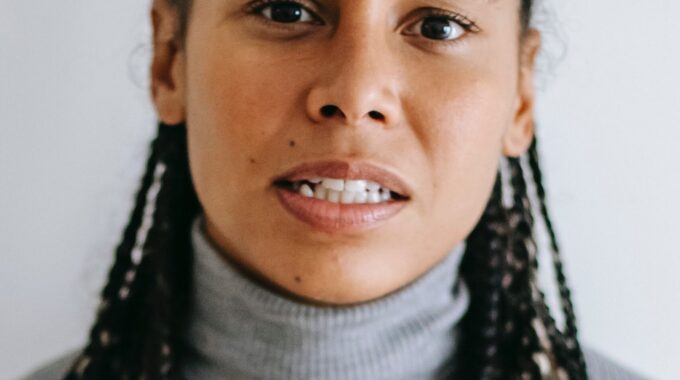Bruxism, or tooth grinding, is a very common problem that many people suffer from daily.…

What is Invisalign® and why is it so popular?
Invisalign® is the brainchild of two Stanford University students, Zia Chishti and Kelsey Worth, who were the first to come up with the concept of moving teeth with a series of computer-generated aligners in 1997.
Invisalign® was launched in 1999 and continues to be the worlds most popular aligner system, having help create more than 13 million smiles to date, 2 million of which are in teen patients.
So, what exactly is it, and why is it so popular? Let’s answer the most asked questions regarding Invisalign®
- What is Invisalign®
Invisalign® is a series of clear, removable aligners that are worn 20-22 hours a day to straighten teeth. Each aligner has small movements built into them to move teeth into their ideal positions, so you will need to change these regularly, generally every 1-2 weeks as instructed by you Orthodontist.
- Who can provide Invisalign® treatment?
Any Orthodontist or Dentist who has been Invisalign® accredited can provide treatment, however, more complex treatment is best handled by experienced clinicians so you may wish to choose an Orthodontist for your treatment, if you fall into this category.
- What types of orthodontic problems can Invisalign® resolve?
Invisalign® is a great tool for treating most common orthodontic problems such as crowding, spacing and issues with the bite, however, each case needs to be assessed on its own merits. More complex orthodontic problems may require other types of braces or combined Invisalign® and fixed brace treatment. A discussion with your Orthodontist will help you decide which treatment option meets your needs best to provide the best result for you.
- What are the benefits of Invisalign® over fixed braces?
The main advantage is the excellent aesthetics Invisalign® provides, with the aligners being barely visible. Brackets and wires can rub against the inside of your cheeks and lips, this seldom happens with Invisalign®.
Also, as the aligners are removed for eating, there are no dietary restrictions, so you can eat normally throughout your treatment. Those who have had fixed braces in the past will remember hard and chewy foods need to be avoided to prevent the braces breaking.
Additionally, aligners are removed for cleaning your teeth, allowing you to maintain excellent oral hygiene and continue brushing and flossing as normal.
- How do I get started with my Invisalign® treatment?
Once it has been established that Invisalign® is the ideal treatment option for you, your clinician will take a digital scan or impression and send this, along with a prescription for you desired treatment and clinical photographs, to the Invisalign® lab.
The lab will then create a custom-made 3D video simulation, known as a ClinCheck, which will show how many aligners are required, what adjustments are needed and where your attachments will go. It will also provide an indication of what the final alignment of your teeth looks like. Just bear in mind that this is only an indication of the result and will not consider individual patient variations. Your Invisalign® clear aligners are then designed to apply the right amount of force to the right place at the right time based on your plan.
- What are attachments?
For Invisalign® to work efficiently and optimise tooth movement, you will need to have some attachments placed on your teeth. These are tooth-coloured filling material shapes which are bonded to your teeth. They remain on the teeth when the aligners are removed and throughout treatment and will be removed once treatment has been completed. They differ in shape depending on the tooth movement that is required and are quite discreet.
At Northwood Orthodontics we are happy to temporarily remove attachments at the front of the mouth for special occasions such as wedding, however, this may extend your treatment duration slightly.
- How will space be made to straighten crowded teeth?
Space will be created for Invisalign® patients in the same way that it is for traditional brace patients, either through extractions or Interproximal Reduction.
Interproximal Reduction involves reducing the width of teeth by removing a small amount of enamel in between teeth. This is not harmful to the teeth and does not increase the risk of sensitivity or decay.
- Is Invisalign® treatment painful?
There is a degree of discomfort associated with all orthodontic treatment, regardless of the type of brace used.
Invisalign® can be slightly uncomfortable initially, particularly when placing and removing the aligners, but this should settle down after the first few days. You may need to take some pain relief at the beginning of treatment.
- How do I clean my aligners?
Using cold water, liquid soap and a soft, clean toothbrush to brush the aligners every day is the best way to keep them clean. You can also use the cleaning crystals provided by Invisalign® or a product such a Retainer Brite to supplement daily brushing with liquid soap.
- I am worried about losing my aligner, what can I do?
The best way to prevent losing your retainer is to always put it in the retainer box provided by Invisalign® whenever it is not in your mouth.
If you do happen to misplace an aligner, all is not lost. Let your clinician know and they will either order a replacement aligner for you or advise you to proceed to the next aligner, depending on how treatment is progressing.
- How often will I have to attend for appointments?
The frequency of appointments will be dictated by your clinician and treatment plan, but you will find that you need fewer appointments than if you had fixed braces, which many people find conveniently fits around their lifestyle and work.
At Northwood Orthodontics, we also use a remote monitoring system called Dental Monitoring. This allows us to track your treatment on a weekly basis through scans that you send in using your mobile phone. This means that any problems can be flagged early, enabling a smooth treatment progression.
- Will I need retainers after Invisalign® treatment?
All orthodontic patients will require retainers after active treatment to maintain their new and improved smile. The options for this will be discussed by your Orthodontist and may included fixed retainers, removable retainers or Vivera™ retainers.
So, in summary, Invisalign® is a fantastic, discreet way to straighten teeth using a barely visible removable aligner. What does this mean for you? Well, it means that you can have all the benefits of a fixed brace without out the drawbacks of it, with a system that fits seamlessly into your lifestyle.
To start your Invisalign® journey call 01923 836334 or email info@orthodontics-london.co.uk, to book a consultation with our Orthodontic Specialist Dr Saba Qureshi.

